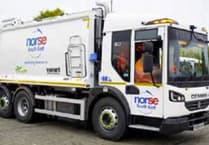In this paper on Thursday, January 19, a couple of correspondents raised the issue of affordable housing in East Hampshire.
It is a very important and complex topic, and I couldn’t miss the chance to provide a few facts.
They mentioned shared ownership, describing the 39 delivered under that scheme by the council so far as ‘a drop in the ocean’.
But they didn’t mention the hundreds of affordable homes delivered in other ways; readers should have a complete picture.
Over the past four years, about 863 affordable homes have been built in East Hampshire, out of 2,733 houses in total.
That’s considerably more than 39 – but more are needed to meet the full demand.
Most affordable homes are built in partnership with developers and housing associations as part of private housing developments.
The council helps set their size, type and tenure to ensure they best meet residents needs.
This district is a very popular place to live and consequently house prices have risen about eight per cent a year since 2003.
There is also a variety of need, from families looking to buy their first home to homeless people looking for security and shelter.
And young people growing up in East Hampshire are priced out of the property ladder before they can get on the first rung.
Delivering affordable homes to help local families stay here is one of our top priorities.
So, for anyone with an interest in how affordable housing is delivered in East Hampshire, I have listed the various methods.
- Social rent: Typically council housing or new housing association homes with rents at about 55 per cent of market rate.
- Affordable rent: Rent at up to 80 per cent of market rate.
- Shared ownership: The occupier buys part of the property and pays rent on the rest, typically to a local authority or housing association.
- Shared equity: The buyer is loaned part of the deposit, and takes out a mortgage on the rest of the property. EHDC has funded 39, with four more to come.
- Rent to buy: The buyer rents the property from a housing association at 80 per cent of market rate. The freed-up 20 per cent is saved for a deposit to buy it, normally after five years.
- Volumetric modular housing: These are transported to the site and installed. The council is assessing its own land for this type of housing.
- Discount market rent: Private homes rented at 80 per cent of market rate. EHDC has applied for a government grant of £2m that, with other council funding, would provide homes for refugees.
- Discount market sale: A new-build home sold at a discount of around 20 per cent to help low and middle earners buy it.
- Pods: A new way to provide quality, supervised homeless accommodation, as in the new Pinewood Lodge in Whitehill and Bordon.





Comments
This article has no comments yet. Be the first to leave a comment.